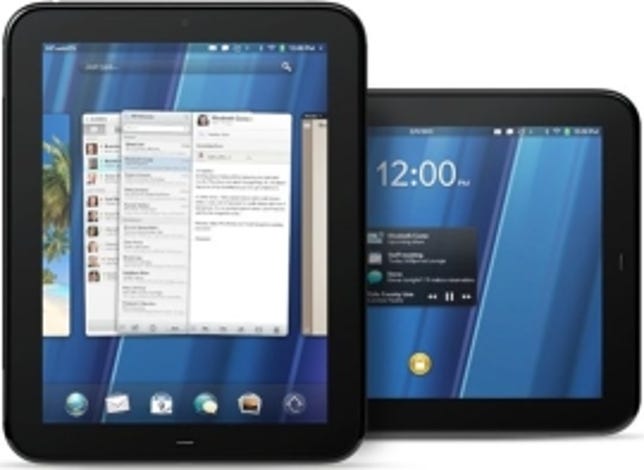In the end, Hewlett-Packard had as much luck with WebOS as Palm did. Maybe even less.

HP said today it will discontinue operations for devices running on WebOS, including its recently launched TouchPad and smartphones. It’s part of a broader shake-up including the potential sale of the company’s personal systems group, which deals with PCs and other consumer devices, and the possible acquisition of software provider Autonomy.
The announcement effectively marks the death of WebOS, which won critical acclaim but little commercial success over the past few years. HP’s surprise move underscores the brutally competitive nature of the smartphone operating system.
“The market and consumers proved that no one wanted it,” said Maribel Lopez, an analyst at Lopez Research. “I’m not sure they could even sell it to anyone.”
With a much smaller scale relative to the likes of Apple’s iOS or Google’s Android, it had a high initial obstacle to clear. Poorly handled by Palm and HP, WebOS may not have ever had a chance to begin with.
Potential savior
Its first incarnation was as the potential savior of smartphone pioneer Palm. The software was the brainchild of Jon Rubinstein, a veteran of Apple and one of the architects of the iPod. With such lofty credentials and an impressive debut at the Consumer Electronics Show in 2009, the industry eagerly awaited the commercial launch of the first WebOS device, the Pre, for which Palm wasn’t shy in encouraging the term “iPhone-killer.”
What followed was series of strategic miscues by Palm that led to a bungled debut. After showing the device off in January, Palm didn’t release it into stores until June, a long gap that sucked out any hype from the phone. It launched with Sprint Nextel, which at the time was still struggling to stem the tide of customer defections.
Palm tried to promote the Pre itself, but released a series of baffling commercials that were publicly criticized for their failure to sell the benefits of the software.
While Rubinstein created a solid software, he never paired the Pre or its follow-up, the Pixi, with quality hardware, leading to devices that felt cheap. The comparison was stark when put next to Apple’s iPhone, which felt like it was put together with quality components.
When Palm finally got additional partners in Verizon Wireless and AT&T, the phones got similarly weak marketing support (Verizon attempted to market the products to females in a slapped together campaign), leading many to predict its demise.
Rubinstein’s biggest miscalculation, however, was the failure to anticipate the rise of Apple’s App Store. While the Pre matched many of the iPhone’s core capabilities, and in some ways exceeded them, it never fostered the developer community that propelled the iPhone into a new-age Swiss Army knife. The lack of applications was a critical mistake that dogged WebOS until its end.
A second life
WebOS appeared to get a second chance at life when HP agreed to acquire Palm for $1.2 billion. HP had a grand vision to integrate WebOS into all of its hardware, with the software linking its computers and printers, alongside smartphones and tablets.
But HP hardly did better. Its first HP-branded device was the tiny Veer, which looked more like a toy than a genuine smartphone. The phone did little to generate buzz about the new WebOS.
With the tablet market exploding due to the popularity of the iPad and its sequel, HP turned its focus on the TouchPad. The device suffered from a confusing start with the product out in the market, but with HP executives stressing that an “official launch” of WebOS would take place later in July. The TouchPad is apparently struggling, with reports that Best Buy is sitting on a pile of unsold inventory. That comes after HP slashed the price on the tablet by $100.
More red flags popped up when HP shuffled around its leadership team for WebOS, bringing in Stephen DeWitt from the Personal Systems Group, where he ran the Americas region. The company moved Rubinstein to an executive role in the group, where DeWitt said he would take a more holistic view of WebOS in HP’s products.
HP’s supposed next flagship phone, the Pre 3, began selling unlocked overseas, but never got a carrier partner.
“HP has had Palm for more than a year and has failed to demonstrate any traction,” Lopez said.
Revival unlikely
For people who are holding out hope that another company steps in to resurrect WebOS, don’t hold your breath.
HP says it plans to “explore options to optimize the value of WebOS,” which is corporate-speak for shopping it around. Technology news website This is my next reported that the company doesn’t want to abandon the platform, and are looking to license it to other companies. It said the executives didn’t elaborate on any potential partners.
While the interest from HP is there, it’s unclear if there are any takers.
“Who in their right mind would develop a phone with an OS that has 2% market share?” asked Roger Entner, an analyst at Recon Analytics.
Forrester analyst Charles Golvin speculated a Chinese manufacturer such as Huawei or ZTE may be interested in a different operating system, but both are seeing success with Android already.
For now, the smartphone market is largely a two-horse race dominated by Apple and Google. With Research In Motion reeling with its software transition, Nokia largely abandoning Symbian, and Microsoft still trying to gain awareness for its Windows Phone software, it’s easy to see how WebOS could have struggled.



